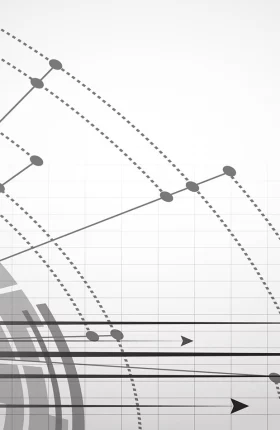Digital disruption in the automotive industry has created enormous opportunities for automakers, but to keep pace with change in the digital era , companies must modernize. For Renault, a French automaker with roots that reach back to 1898, the imperative to innovate is in its DNA. That doesn’t mean it’s easy.
As CIO of the Renault Group since May 2016, Frédéric Vincent has overseen the company’s comprehensive digital transformation. Entering a multinational company with more than 2,000 legacy applications, most of which dated back 10 to 15 years, Vincent had his work cut out for him. But he maintained a sharp focus on creating measurable, tangible value for the business and the consumer, and his efforts are paying off handsomely. Renault anticipates that its digital transformation will garner €1 billion in value by 2020.
Recently, Vincent sat down with Antoine Gourévitch, a senior partner and managing director in the Paris office of The Boston Consulting Group and the global leader of data and digital platforms. Edited excerpts from that conversation follow.
About Frédéric Vincent
At a Glance
Education
1992, BA, École Centrale Paris
Career Highlights
2016–present, Renault Group, CIO
2013–2016, CANAL+ Group, chief technology and IT officer
2007–2013, CANAL+ Group, various positions
Thanks very much for joining us today, Frédéric. Tell us a bit about what you do at Renault.
I have two roles at Renault. The first, as CIO, is to manage IT, and the second, as president of Renault Digital, is to ensure that the Renault Group is transforming itself toward digital. We are at the heart of a unique transformation. Digital is massively entering the automotive industry—both upstream, in vehicle design and manufacturing, and downstream, with customer relationships. So there is an enormous digital transformation to be made at Renault.
Please describe your role in Renault’s digital transformation.
The first step was to communicate the value that digital could bring to the entire company. We did a lot of work to identify—and quantify—all digital projects that could generate value for the Renault Group. We found that digital could deliver around €600 million per year: 50% from gains in efficiency and productivity and 50% from new businesses. So we had a clear objective: capture €600 million in value. It was really the first step toward onboarding the whole company. We focused on value rather than the transformation itself.
Once we’d calculated the value of digital for Renault, we asked, How do we capture €600 million in the different business lines over the next three years?
What steps have you taken to capture that value?
We have three main levers. The first is technology oriented. We had to build a digital platform that would work alongside our legacy systems and allow us to get value from all of our data. Our data is spread across more than 2,000 applications, so we needed a digital platform that would consolidate the data and make it usable.
Second, we changed our ways of working. We decided to use agile for all of our new projects. This is quite new for our staff, so scrum masters and agile coaches were needed to explain how to work in an agile way. We also upgraded our working tools within the company to facilitate real-time collaboration and information sharing for our teams, since so many of our employees are traveling and working all over the world.
Finally, we had to hire new IT talent, as well as upskill our existing teams to work with the new technologies. To accelerate the transformation, we created a digital hub called Renault Digital. It’s a Renault subsidiary, composed of 300 people. Its purpose is to provide the Renault Group with the skills, methodology, and working environment that can facilitate digital transformation.
When a company creates a digital hub, there’s a danger that it can become isolated. How did you integrate the digital hub within the company as a whole?
Indeed, we were aware of two potential pitfalls in creating a digital hub. The first risk was that the hub could become a completely isolated silo and largely irrelevant. This is not hard to imagine, since a group of 300 employees is obviously a small number within a company of 130,000 employees. At the other end of the spectrum, there was a risk that the hub could be completely absorbed into the company and could get lost in the intricacies of Renault’s organization and processes.
We worked continually to find a balance so that Renault Digital could be both autonomous and well integrated. To ensure its autonomy, we made it a 100% Renault subsidiary, installed it in a dedicated building, and gave it its own human resources and purchasing structures. Because I chair the subsidiary, and I’m also in charge of IT, I can ensure strong collaboration between the Renault Group and Renault Digital. Also, the executive committee monitors the hub’s activities in its monthly meetings to make sure that key Renault department heads are heavily involved.
Do your IT people feel that there is a split, with some teams working on legacy IT systems and others working on digital?
That’s a risk, but all of the projects we run continue to be steered by the IT department. When projects require newer digital skills, we take these projects and incubate them within Renault Digital, keeping the team intact. So we take a team of business and IT employees and we physically move them into Renault Digital. This allows the team to work with people who can provide a unique mix of digital skills, such as scrum masters, agile coaches, and experts in UI [user interface], UX [user experience], data, and design thinking. And we employ what we call training by doing: that is, the team is trained in a specific methodology by executing its project. So it’s really an incubation system in which Renault Digital provides methodological and technical skills to Renault’s teams.
Can you give an example of an executed digital project that has had an impact?
Yes, I can give two examples. The first is around vehicle manufacturing. Today, when you look at a plant, our teams are organized into what we call elementary working units. They are small teams of 10 to 12 people who generally work on the mounting or assembly chain, and they are headed by a unit leader. This unit leader should be close to his teams to ensure that the work is being done in good conditions and that the quality is high. However, he regularly had to go back to his office, because all the information he needed for his work was stored on his computer, which was generally far from the production chain. So he was traveling about 12 kilometers a day, going back and forth between his office and his teams.
We decided to make his life easier by moving all the information he needs onto a tablet. The principle is quite simple. We wanted to reduce the amount of time he spends walking back and forth, because he can use that time to interact with his teams and check quality. So we equipped the plants with Wi-Fi, configured our legacy systems to display information on a tablet in real time, and trained the teams to use the new system.
The gains are easily measurable. We know that the unit leaders save time, and we know the quality of their work is higher. The unit leaders are very satisfied, because it enables them to work more closely with their teams. It took only a few months to put in place. We are experimenting with this at an industrial site in Valladolid, Spain, and we plan to scale it to the whole company.
The second example is on the commercial side. On our websites, we have a small module that enables consumers purchasing a new vehicle to obtain a price quote that is based on their turning in a used vehicle. It used to be that we simply published a guide that quoted average prices for used cars, but we totally redesigned this experience for our customers. If you have a used vehicle, you simply enter the registration plate on the website. From there, we ask you to compute its mileage and the general condition of the vehicle (if it has scratches, for example). All this is highly visual; it can be done in a few clicks. You enter your name and address, and within seconds, you receive a proposal, which is contractual. The closest dealer contacts you, and you go to the dealership. The dealer checks the vehicle’s condition and buys it from you at the agreed-upon price.
We put this module into production in France recently, and it multiplied touchpoints by a factor of 20. Obviously, these touchpoints are important because they generate traffic in the network for future sales. So just by changing this module and allowing for a contractual commitment from the dealership, we dramatically multiplied the number of contacts initiated by our customers.
With just a few months’ work, we can develop these new products that are highly adapted to the business. The business can judge in a few weeks whether or not the product is efficient, and then we can correct, adapt, and put it into production very quickly. And these products will obviously contribute to the value I was talking about before—the annual €600 million in value from new digital initiatives.
And where does Renault stand today in terms of value?
We started this in January 2017, so we are just through the first year. But we are in line with our forecasts—and even beyond that for the sales and marketing team. So we have revised our ambitions. Now we expect €1 billion by 2020. The value of digital transformation is here, and we measure it every day.
Frédéric, thank you very much.
Thank you, Antoine.






